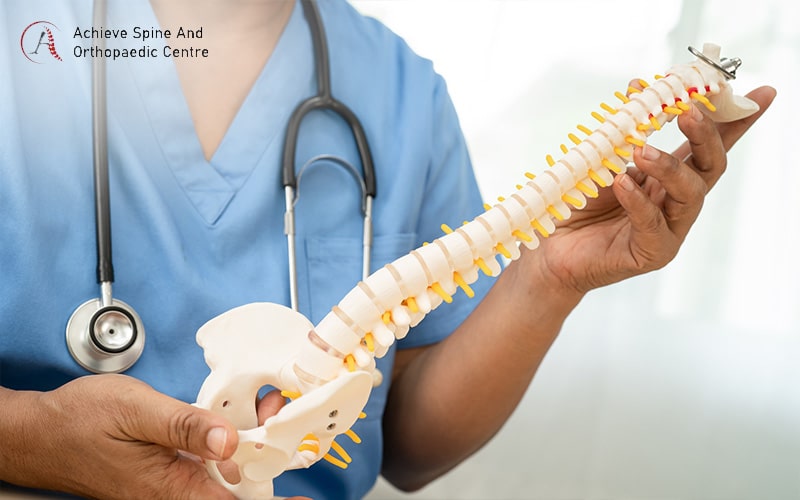Have you ever experienced back pain that doesn’t stay confined to your back but instead radiates down your arms or legs? This type of discomfort, known as radiating back pain, is often linked to conditions affecting the spine and nerves. Although it can be unsettling, understanding the causes behind this pain is key to managing it and recovering your quality of life. In this article, we will break down what exactly causes this radiating pain, how it impacts your body, and what you can do to reduce discomfort.
How the Spine Affects Your Limbs
Your spine is essential for facilitating communication between your brain and the rest of your body. At its core is the spinal cord, which serves as a conduit for nerve signals. These nerves branch out from the spinal cord, extending to your arms, legs, and other areas, enabling movement, sensation, and reflexes. However, when the spine is compromised—whether through injury or degenerative conditions—these nerves can become affected and cause radiating back pain.

Common Causes of Radiating Pain
Radiating pain in the limbs can be a result of several conditions, each involving nerve compression or irritation. Below are the most common causes:
1. Sciatica
Sciatica is one of the most well-known causes of radiating back pain, which happens when the sciatic nerve—which runs from the lower back down through the legs—becomes compressed or irritated. The pain often starts in the lower back or buttocks and radiates down one or both legs. The intensity of the pain can vary, from a dull ache to sharp, shooting sensations, and it can be exacerbated by movement, sneezing, or coughing. Seeking treatment for sciatica pain early can help alleviate symptoms and, more crucially, prevent the condition from worsening.
2. Herniated or Bulging Discs
Another common cause is a herniated or bulging disc. The discs in your spine function as cushions between the vertebrae, allowing for movement and flexibility. When a disc becomes damaged or slips out of place, it can press on nearby nerves, leading to pain that travels down the limbs. The severity of the pain depends on the location and extent of the disc damage. Conservative treatments, including physical therapy and spinal health treatment, can help relieve discomfort. However, more severe cases may require surgical intervention.
3. Spinal Stenosis
Spinal stenosis occurs when the spaces within the spine become narrower, placing pressure on the spinal cord and nerves. Individuals with spinal stenosis may experience symptoms such as numbness, weakness, or a feeling of heaviness in the limbs. If left untreated, spinal stenosis can lead to significant mobility issues. In more severe cases, spinal stenosis surgery may be necessary to relieve the pressure and restore spinal health.
Diagnosis and Treatment
If you are experiencing radiating back pain, it is essential to seek advice from a spine specialist as soon as possible. Nerve involvement means that the longer you delay, the higher the risk of worsening symptoms or even permanent damage, which can affect your mobility and overall quality of life. Early intervention can help manage symptoms and prevent further complications.
For those dealing with conditions like sciatica, spinal stenosis, or herniated discs, endoscopic spine surgery may be an option worth considering. During these procedures, a spine specialist uses an endoscope and specialised instruments to access the affected area through small incisions. This allows for less disruption to the surrounding tissues and a faster recovery time compared to traditional surgery.
In addition, endoscopic spine surgery can often be carried out under local anaesthesia, making it a suitable choice for individuals with certain health conditions who may face higher risks with general anaesthesia. This includes patients with heart disease, diabetes, or older adults who might benefit from a less invasive approach with fewer potential complications.

Conclusion
Dealing with radiating back pain can be frustrating, but you do not need to face it alone. Whether your pain stems from a temporary cause or a more severe condition, a healthcare professional can guide you towards the right treatment options for your spinal health.
At Achieve Spine And Orthopaedic Centre, our team is here to help you understand the cause of your discomfort and provide treatment options. Specialising in endoscopic spine surgery, we focus on minimally invasive techniques that prioritise tissue conservation and promote quicker recovery. Contact us today to book a consultation and take the first step toward feeling better.

Wu Pang Hung
ABOUT AUTHOR
Dr. Wu Pang Hung is an experienced orthopaedic and spine surgeon in Singapore, specialising in both uniportal and biportal endoscopic spine procedures for complex cervical, thoracic, and lumbar spinal conditions. With over 10 years in the field, he is actively involved in numerous spine societies and contributes to several international journals and textbooks. Dr. Wu has also received specialised training in spine surgery across Canada, South Korea, Japan, and Germany.
Contact Us
WHATSAPP US @+65 9746 6178
CALL US @+65 9746 6178
MAKE AN APPOINTMENT



